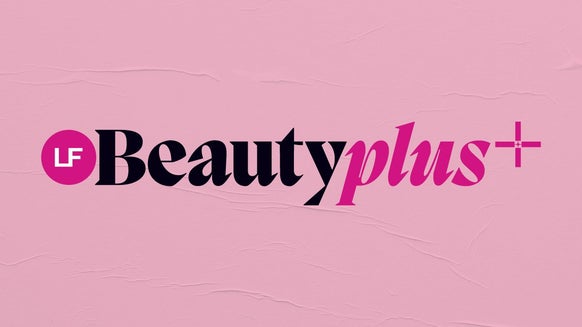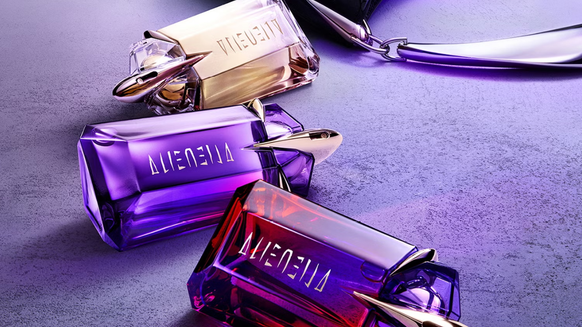Beauty spending habits in 2023

Blurring the lines between necessity and luxury, consumers remain undeterred, investing considerably in cosmetics, skincare, treatments and haircare. Beauty is an inherently resilient feature, as people continue to desire it even through times of financial difficulty, a staple theory of the ‘Lipstick Index’. The ‘Lipstick Index’ is a term coined by Leonard Lauder, chairman of the board of Estée Lauder, suggesting that during economic downturns, consumers tend to buy small luxury items like lipstick as a form of affordable indulgence. For example in 2020, a year of major turbulence for many, £587 million was spent on beauty in the UK alone. This is a testament to the idea that beauty spending is not discretionary but a core aspect of personal upkeep and self-care.
Where are people spending their money in beauty?
rimarily make-up focused, including a heavy focus on nail polish, with make-up wipes and a moisturiser making up the bulk of our skincare routines. However, in 2023 the case is very different for beauty fans, for a number of reasons, such as:
Education
The rise of social media has increased the access of everyday people to information about skincare products, ingredients and routines by a massive step. Instead of relying on hand-me-down information and routines from mothers and grandmothers, people are educated first-hand on the importance of wearing SPF, protecting their skin barrier and investing in the right routine for them.
Social media trends
Social media has also accompanied the rise of beauty trends explicitly focused on skin, which is a relatively new phenomenon. For example the rise of the clean girl aesthetic, skin positivity and skinimalism all focus on having healthy glowing skin, which for many is the result of investment in good skincare.
Prevention is more important than correction
With the rise of education also comes the rise in preventative skincare. Instead of trying to turn back time, skincare fans are increasingly trying to stave off the ageing process for as long as possible. This includes the use of retinol, plumping hyaluronic acid and sun protection, from an early age to prevent the development of fine lines and wrinkles, with searches for ‘SPF’ up over 338% between 2013 and 2023, showing the shift from correction to prevention over the last ten years.
Skincare is wellness
Skincare is no longer about what you look like, but also about how it makes you feel on the inside. Beauty and wellness have become intrinsically intertwined with self-care. As the wellness movement grows so does the focus on products and routines that support a healthy mind, body and skin.
Most repurchased luxury beauty products of 2023
Fragrances are the most repurchased from luxury brands
Fragrances make up a large proportion of our luxury brands’ most repurchased beauty products, including iconic labels such as Yves Saint Laurent with their Libre eau de parfum. Jean Paul Gaultier’s most repurchased product is their Le Beau eau de toilette, whilst Chloé’s customers love the Chloé signature eau de toilette. This is largely due to the luxurious impression personal fragrance leaves on a person, as people instantly are able to reap the rewards of using the product as opposed to waiting over a long period of time to see real results.
Most repurchased luxury skincare products
Our data shows that beauty consumers are not afraid to invest in luxury skincare products. Lancôme’s most repurchased product is the Advanced Génifique Youth Activating Serum and Aesop buyers are repurchasing the Lightweight Facial Hydrating Serum, showing serums come in high when prioritising beauty budgets due to their potent ingredients and effective results.
Lip products are the most repurchased luxury makeup products
For Clinique and By Terry, lip products topped the list as the luxury brands’ most repurchased products. Clinique’s Almost Lipstick in Black Honey has gone viral, trending across TikTok despite being available for over five decades, for its chameleon-like, universally flattering colour that suits a wide variety of skin tones. By Terry’s most repurchased product is the signature Baume de Rose Flaconnette, a universally flattering rose-scented lip balm in its travel-friendly packaging, meaning it is suitable to throw in your handbag.
Product satisfaction: delivers on its promised results such as clearing acne or soothing sensitive skin. Brand loyalty: Some people develop a strong affinity to certain brands which often motivates them to buy from a brand without considering alternatives. Consistent quality: A product that maintains consistent quality over time helps build a sense of reliability and trust from buyers.
The most purchased beauty brands in 2023
Beauty fans love Elemis
Elemis was revealed to be the most purchased beauty brand, with beauty buyers clearly impressed by their high-quality products, with the iconic Pro-collagen cleansing balm accruing an astounding 885 five-star reviews online. When paired with the sensitive cleansing wash, which itself has over 100 five-star reviews, makes a perfect double cleansing routine according to Elemis’ fans.
Cult classic beauty brand Bobbi Brown is still loved by fans
Bobbi Brown is a world-famous makeup line, originally founded by the makeup artist Bobbi herself in 1991. That said, it's no surprise that the iconic brand came in as our second most purchased of the year.
Despite being famous for championing a natural makeup look, Bobbi Brown's most popular product these days is the Vitamin Enriched Face Base which is loved by fans of all ages as a renowned alternative to traditional primers. The product has ranked over 800 five-star reviews, with almost 15,000 monthly searches on TikTok and 22,000 on Google.
Kerastase and Redken show beauty fans love haircare
Kérestase and Redken are the two haircare brands ranking in the top ten most purchased brands, ranking in sixth and eighth place respectively. These are two brands that are leaders in the professional haircare space and leading the storm when it comes to investing in high-quality products for your hair. Kerestase’s most popular product is the Elixir Ultime L'Original Hair Oil which helps keen locks visibly soft. Redken is renowned for its popular All Soft shampoo and conditioner which according to reviewers helps bring hair back to life.
Where do people spend the most on beauty products in the UK?
Milton Keynes is home to Britain's biggest beauty investors
Ipswich are Britain's savviest beauty shoppers
Our data showed that Ipswich is home to the UK’s savviest beauty shoppers. When analysing search volumes for an array of keywords around beauty product dupes and money-saving deals, Ipswich had the highest number of money-saving searches in proportion to their population size of almost 148,000 with a score of 73 out of 100. In second place is York with an overall score of 70 out of 100. Dundee ranks in third place with a score of 67.
Although the cost of living crisis means some people have had to turn towards dupes as they tighten their pursestrings, it is sure to see that spending on luxury beauty hasn’t had an impact on people’s beauty habits as they continue to invest in their favourite luxury beauty products. Fragrances, from brands such as Giorgio Armani and Yves Saint Laurent continue to dominate what people love most from their beloved luxury brands, as they repurchase perfumes and colognes time and time again. However, we can see that skincare is taking priority for most consumers, as lifestyle and habitual changes on top of social media trends have helped shift focus to the skin itself. However, we predict that this trend will continue in the bodycare space, as more people invest in the small luxuries that make them great on a regular basis, and look holistically at their wellness from top to toe.
Discover both iconic luxury brands and highly rated dupes across LOOKFANTASTIC’s top beauty brands for skincare, makeup, bodycare and fragrance.
Methodology
I've always been someone who has been fascinated by makeup and beauty. How it can liberate and empower individuals to express themselves and allow people, me included, to feel more confident. Growing up in a female household who are all beauty oriented has allowed me to experiment with makeup from a young age. My absolute go-to makeup look is a glowy, natural look and I've recently started doing faux freckles- to feel sun-kissed even in the British climate. Cream contour, blush, and highlight are my makeup bag must-haves- with makeup revolution bright light highlighter being my absolute favourite. When it comes to skincare, I have never been someone to have a full routine. I like to keep it simple with a light moisturiser and of course, my Bondi Sands tinted SPF.







